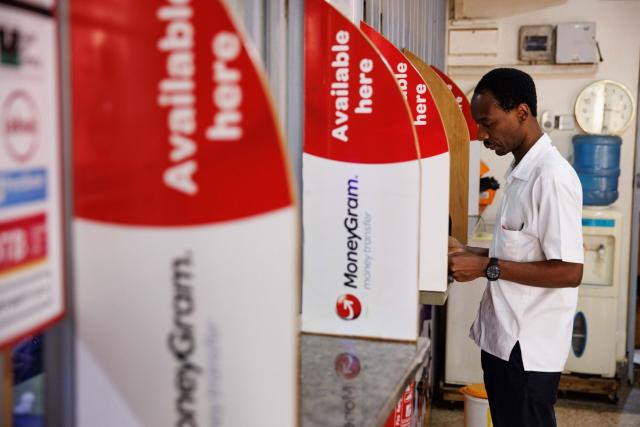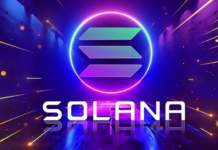
MoneyGram is set to revolutionize cross-border payments with the launch of its new non-custodial wallet. This wallet will allow users to seamlessly swap between fiat currency and USDC stablecoin, providing them with a hedge against exchange rate fluctuations and inflation. By integrating crypto into its services, MoneyGram aims to address the challenges faced by cross-border payments, such as slow processing times and high fees. With the rise of native stablecoins in Latin America, this new wallet presents an opportunity for cross-border remittances and could redefine how money moves between fiat currencies.
MoneyGram Launches New Crypto Wallet
MoneyGram, a global payments platform, has recently launched a new crypto wallet that allows users to seamlessly swap between fiat currency and USDC stablecoins. This non-custodial wallet is powered by the Stellar blockchain, showcasing MoneyGram’s commitment to integrating cryptocurrency into its services.
Wallet Allows Fiat and USDC Swaps
With MoneyGram’s new crypto wallet, users have the ability to easily swap between different fiat currencies and USDC stablecoins. This feature provides convenience and flexibility for users who want to hold their funds in USDC before deciding on a currency transfer. By offering this option, MoneyGram is enabling users to hedge against exchange rate fluctuations and protect themselves against inflation.
Non-Custodial Wallet
One of the key features of MoneyGram’s new wallet is that it is non-custodial. This means that users have complete control and ownership over their funds, as they are not held by a third-party custodian. Non-custodial wallets offer enhanced security and privacy, as users are not required to trust a centralized institution to safeguard their funds.
Powered by the Stellar Blockchain
MoneyGram’s new crypto wallet is powered by the Stellar blockchain. Stellar is a decentralized network that enables fast and low-cost transactions. By utilizing the Stellar blockchain, MoneyGram is able to provide users with efficient and cost-effective transfer capabilities.
Benefits of the New Wallet
MoneyGram’s new crypto wallet offers several benefits to its users. These benefits include hedging against exchange rate fluctuations, protection against inflation, and addressing the challenges of cross-border payments.
Hedging Against Exchange Rate Fluctuations
By allowing users to hold their funds in USDC stablecoins, MoneyGram’s wallet provides a means of hedging against exchange rate fluctuations. This is particularly beneficial for individuals or businesses that frequently engage in international transactions, as it helps to minimize the impact of currency value fluctuations on their finances.
Protection Against Inflation
Inflation is a concern for many individuals and businesses, particularly in countries with high inflation rates. MoneyGram’s new wallet offers a solution to this problem by allowing users to hold their funds in USDC stablecoins. Since stablecoins are tied to a fiat currency, such as the US dollar, they offer a stable value that protects against the devaluation of local currencies.
Addressing Challenges of Cross-Border Payments
Cross-border payments can be slow and expensive due to the need for intermediaries and complex settlement processes. MoneyGram’s new wallet aims to address these challenges by enabling real-time settlement with cryptocurrency. By leveraging the speed and efficiency of blockchain technology, MoneyGram is able to provide users with a seamless and cost-effective solution for cross-border payments.
MoneyGram Rolling Out USDC Stablecoin Services
MoneyGram recognizes the potential of stablecoins, particularly USDC, in addressing the challenges faced by cross-border payments. Slow processing times and high fees have long been a concern in the traditional banking system. However, the real-time settlement capabilities of cryptocurrency offer a viable solution to these issues.
Slow Processing Times and High Fees
Traditional cross-border payments can take several days to complete and often come with high transaction fees. This not only inconveniences individuals and businesses but also hinders economic growth and financial inclusion. MoneyGram’s USDC stablecoin services aim to overcome these challenges by enabling faster and more cost-efficient transactions.
Real-Time Settlement with Crypto
Cryptocurrency, such as USDC, allows for real-time settlement of transactions. This means that funds can be transferred and received almost instantaneously, eliminating the need for lengthy processing times. MoneyGram’s integration of USDC stablecoin services enables users to take advantage of these real-time settlement capabilities, providing a faster and more efficient cross-border payment experience.
Scalability Issues and Regulatory Uncertainty
While cryptocurrency offers significant benefits for cross-border payments, there are still challenges to overcome. Scalability issues, such as high transaction fees and network congestion, can impact the smooth operation of cryptocurrency networks. Additionally, regulatory uncertainty surrounding cryptocurrency adoption in different jurisdictions poses a challenge for widespread use.
MoneyGram acknowledges these challenges and aims to address them through its USDC stablecoin services. By offering a seamless and user-friendly experience, MoneyGram aims to overcome scalability issues and navigate regulatory requirements to provide a reliable and efficient cross-border payment solution.
Global ATM Concept Using Blockchain
MoneyGram sees the potential of blockchain technology in transforming global banking and fund transfers. While cash still dominates global banking systems, the integration of blockchain technology can revolutionize the way money is transferred across borders.
Cash Dominance in Global Banking
Cash continues to be the primary form of currency in many parts of the world. However, relying solely on cash can be inefficient and expensive, particularly for cross-border transactions. MoneyGram recognizes the need for a more streamlined and cost-effective solution to global fund transfers.
Utilizing Blockchain for Fund Transfers
Blockchain technology offers several advantages for global fund transfers. The decentralized nature of blockchain networks ensures transparency, security, and efficiency. By leveraging blockchain technology, MoneyGram aims to transform its services into a global ATM concept, enabling users to access their funds and transfer money seamlessly across borders.
Compatibility with Other MoneyGram Wallets
MoneyGram’s global ATM concept is designed to be compatible with other MoneyGram wallets. This interoperability ensures a seamless user experience and facilitates the transfer of funds between different wallets. By utilizing blockchain technology, users will have greater flexibility and accessibility when it comes to managing their finances.
Potential of Cross-Border Remittances
Cross-border remittances, particularly in Latin America, have the potential for significant growth and impact. The rise of native stablecoins in the region presents new opportunities for individuals and businesses to engage in cross-border transactions.
Rise of Native Stablecoins in Latin America
In countries like Argentina and Venezuela, where inflation rates are high, native stablecoins offer a means of hedging against inflation. These stablecoins are pegged to local currencies, providing stability and protecting against the devaluation of national currencies.
Hedging Against Inflation
By utilizing stablecoins, individuals and businesses can protect their assets and hedge against inflation. This is especially important in economies where traditional banking systems may be unstable or unreliable. The use of stablecoins provides a secure and stable store of value for cross-border remittances.
Massive Potential for Remittance Flows in Latin America
According to the World Bank, remittance flows into Latin America and the Caribbean reached $145 billion in 2022. This highlights the massive potential for cross-border remittances in the region. By leveraging the advantages of stablecoins and blockchain technology, MoneyGram aims to tap into this market and provide a more efficient and affordable solution for individuals and businesses sending money across borders.
Emerging Market for Indigenous Latin American Stablecoins
The market for indigenous Latin American stablecoins is still emerging, but it holds great promise for transforming money movement across borders. Companies like Num Finance and Anclap are leading the way in developing stablecoins pegged to South American currencies.
Num Finance and Anclap Developing Stablecoins
Num Finance and Anclap are at the forefront of the emerging market for indigenous Latin American stablecoins. These stablecoins are pegged to South American currencies, providing users with a secure and stable form of digital assets.
Transforming Money Movement across Borders
The development of stablecoins in Latin America has the potential to transform how money is moved across borders. By offering a secure and efficient means of transferring funds, stablecoins enable individuals and businesses to engage in cross-border transactions without the need for traditional banking systems. This can promote financial inclusion and unlock economic opportunities for underserved populations.
Disclaimer and Transparency
MoneyGram is committed to providing unbiased and transparent reporting. This article aims to deliver accurate and timely information to readers. However, readers are encouraged to verify facts independently and seek professional advice before making any financial decisions based on the content provided.
Unbiased and Transparent Reporting
MoneyGram ensures that its reporting is unbiased and transparent. By providing reliable and impartial information, MoneyGram aims to build trust with its readers and deliver high-quality content.
Independent Verification of Facts
To ensure accuracy, MoneyGram conducts independent verification of facts and sources. This rigorous review process helps to maintain the integrity of the information presented and provide readers with reliable information they can trust.
AI-Driven Article with Human Review
This article was initially compiled by an advanced AI system but underwent a thorough human review process. The AI system extracts, analyzes, and organizes information from various sources, ensuring a data-centric approach to reporting. The human review process confirms the relevance, accuracy, and adherence to MoneyGram’s editorial standards.
Conclusion
MoneyGram’s launch of a new crypto wallet, powered by the Stellar blockchain, offers users a seamless and efficient solution for swapping between fiat currency and USDC stablecoins. The wallet provides benefits such as hedging against exchange rate fluctuations, protection against inflation, and addressing the challenges of cross-border payments.
By rolling out USDC stablecoin services, MoneyGram aims to overcome slow processing times and high fees associated with traditional cross-border payments. The integration of real-time settlement capabilities and the scalability of cryptocurrency networks provide a faster and more cost-effective solution.
MoneyGram also recognizes the potential of blockchain technology in transforming global fund transfers. By turning MoneyGram into a global ATM concept using blockchain, the company aims to revolutionize the way money moves across borders.
The rise of native stablecoins in Latin America presents new opportunities for cross-border remittances. These stablecoins offer a means of hedging against inflation and have the potential to unlock massive remittance flows in the region.
MoneyGram acknowledges the emerging market for indigenous Latin American stablecoins and is committed to providing unbiased and transparent reporting. Through independent verification of facts and a rigorous review process, MoneyGram ensures the accuracy and reliability of the information it delivers to its readers.











